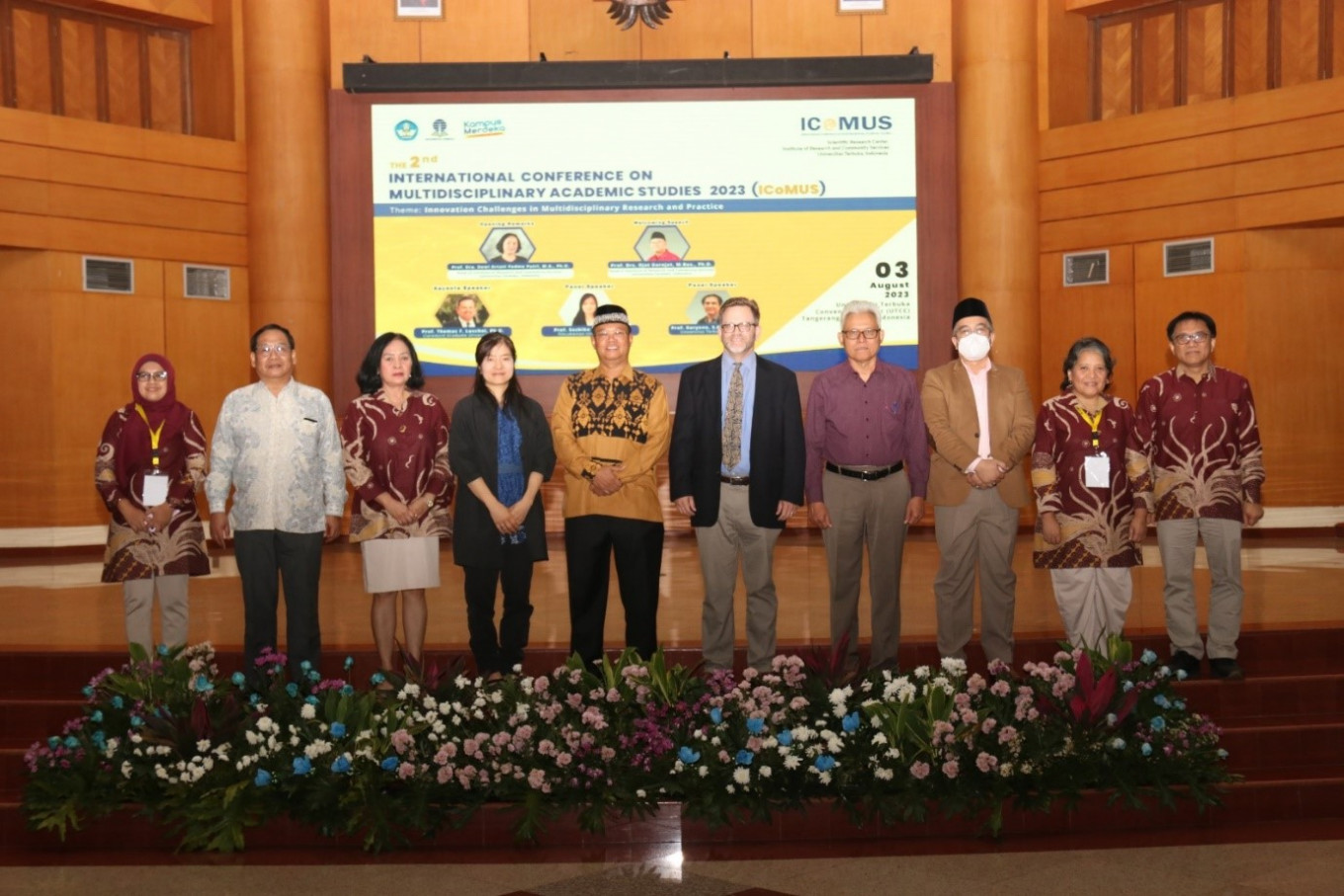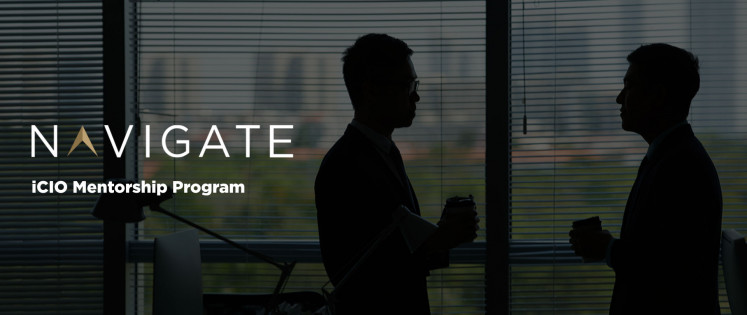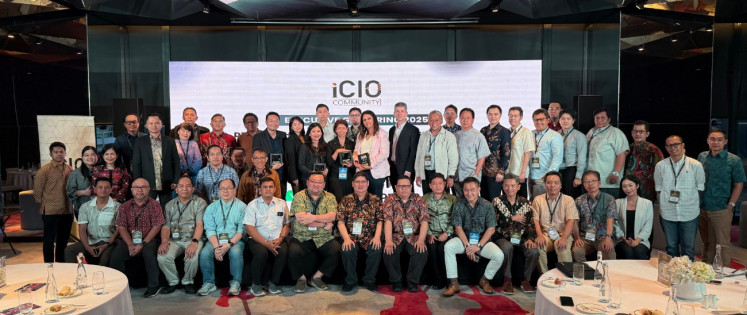Popular Reads
Top Results
Can't find what you're looking for?
View all search resultsPopular Reads
Top Results
Can't find what you're looking for?
View all search resultsMultidisciplinary researches needed to solve complex problem in society
Change text size
Gift Premium Articles
to Anyone
T
he Second International Conference of Multidisciplinary Academic Studies (ICoMUS) held at Universitas Terbuka revealed the importance of multidisciplinary researches in coping with problems in society, which are becoming increasingly complex.
Prof. Thomas F. Luschei Ph.D. said that single discipline alone could not resolve the problems in society because most of the problems were multi-disciplinary in nature, involving scientific, social and cultural aspects.
“This explains why multidisciplinary approaches entail collaboration among different disciplines,” he said in a press conference following his presentation, titled ‘Overcoming Innovation Challenges in Multidisciplinary (Educational) Research and Practice’ at the UTCC in South Tangerang on Aug.3.
Luschei said he was previously involved in doing USAID-funded research project with UT for several years and “I am excited to be back again to join the seminar with interesting topic on mutidisciplinary researches, a solution to the most complex issues.”
The conference themed, ‘Innovation Challenges in Multidisciplinary Research and Practice’ also featured Prof. Miyata Sachiko, Ph.D. from Ritsumeikan University, Japan, and Prof. Daryono, Ph.D. from Universitas Terbuka.
According to Luschei, Indonesia is such a fascinating and diverse country that “I would never and even think about doing a research and publishing on my own without colleagues from Indonesia and UT,” he said.
“It would very difficult to conduct a cross national research without collaboration and through collaboration, we can get another perspective.”
\Citing an example of the collaborative research involving UT, he said, biology instruction. “It was an interesting moment to see cross cultural concept of how to develop the idea of creativity in biology instruction. There were different models of creativity in biological teaching. It was a very useful finding in teaching creativity in biological lesson,” he said.
According to him, despite the big challenge facing Indonesia when it comes doing collaborative research, such as geographical condition, collaboration is possible thanks to technology. I am now collaborating with India, Malawi and Columbia. It is possible with Indonesia,” he said.
Another challenge, he said, was boundaries associated with economics and sociology. “We need incentives and support to deal with the boundaries,” he said.
According to him, developing friendship and trust is really essential part of collaboration.
Encouraging lecturers or instructors to do more multidisciplinary researches has something to do with a system and support because they have responsibility for the result of the research. “This means incentives and support are needed to encourage the researchers or instructors to do the research,” he pointed out.
Meanwhile, UT rector Ojat Darojat was of the view that there were problems that could not be solved by just one or single discipline, but needed researches from other disciplines. “For example, to cope with the problem of corruption. It is not enough just to give people with religion lesson. But they also need to be given economics, math and other lessons,” he said.
“This way the issue can be seen from different perspective and we can gain comprehensive viewpoint to the problem in the society. This needs support from all friends of faculties given that they have limitation in their respective field. This way, any emerging problem in universities or the public at large can be resolved comprehensively,” he said.
Ojat said that the seminar aimed to develop the quality of human resources of UT members, especially lecturers, by giving them an opportunity to share their experiences and knowledge to other parties, including with academicians and students from other universities. “This is very important because it is one of the tasks that they have to carry out, which showcase part of indicators of UT performance. We have to provide an opportunity for the lecturers to present their superiority in the forum like this, which will be followed by their step to publish their writing at national or international, scientific journal, a tradition that UT continually maintained.
He said further that the result of the conference could also be implemented in the curriculum and this way, “our curriculum offers various study program with specific subject matters.”
Downstream of research results
The UT rector highlighted the downstream of the research results. “The research results are not only produced in the form of a scientific journal but also products that can boost, for example, our curriculum. We now have lessons related to technology advancement, such as in the field of metaverse, artificial intelligence, chatbot, virtual realty and etc. We develop them in our innovation center. The downstream of the research is currently being carried out to contribute to “raising the quality of our learning process. Now, most part of interaction developed in UT uses chatbot.”
“All of these will complement lecture or study offered at UT so as to improve the quality, not just ordinary digital learning or narration but also complete with live audio and video to give new horizon to students so that they are prepared to face the future trend, such 4.0 industry,” he said,
“It is of paramount importance to prepare the youths to be able to live the life equal to that of people from advanced countries,” he added.
Ojat also disclosed that part of the research results had been implemented in the society through UT’s community development unit at Community Development Research Institution and Science Center (LPPM).
According to him, part of the research results have been utilized to ensure that UT’s assisted village program could run well and meet the expected target.
“For example, based on research, it was found that a particular village had a competitive edge related to cassava or food and so we assist the village in developing the cassava/foods under our assisted village program. This way, UT is not an ivory tower as the results of the research that we have done can be utilized to raise people’s prosperity,” he noted.
He revealed that currently, UT had 40 villages that it developed under its assisted village program.
The assisted village program involved four faculties developed local micro-small-and-medium enterprises (UMKM) engaged in the related business. “W are now running the program in a village in Bogor. We also collaborate with a developer under the company’s corporate social responsibility (CSR) initiative in Pantai Indah Kapuk (PIK) in North Jakarta,” he said.
With UT widely spread across Indonesia, many villages such as Teluk Naga in Tangerang and other villages beyond greater Jakarta (Jabodetabek) in Java Kalimantan and so forth receive UT’s assisted village program.
“The development of the villages is based on their respective competitive edge, whether tourism or farming,” he said.










